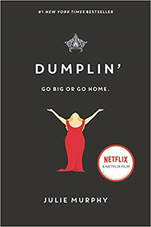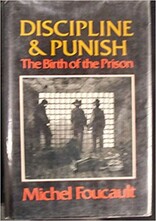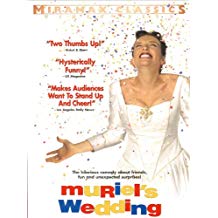A Return to the Panopticon in Murphy’s Dumplin’, and Why You Probably Won’t Get Murdered in a Joyce Carol Oates Story if You Are a Size 14 or Over by Stacy Graber
| Contrary to empirical evidence, Julie Murphy’s (2015) Dumplin’ is not a story about youthful romance or friendship tested or parent-child conflict, or even a pathetic beauty pageant in small town America (--although the pageant is pretty relevant considering the shades of Honey Boo Boo (2012) and/or the adolescent rendition of Toddlers and Tiaras (2009)). Instead, Dumplin’ actually concerns the hyper-aggressive installation of a Foucauldian surveillance mechanism in the mind of an overweight teen such that her every waking moment is occupied by the anxiety of being scrutinized and condemned for having an aberrant, unruly, and repulsive body. A thin prison guard stalks the focal character’s thoughts and ensures she is unceasingly controlled by feelings of shame, self-contempt, and worthlessness, all focused on her rebel body. This falls in line with Foucault’s (1977) metaphor of the Panopticon wherein the subject surveils herself as the legitimate warden/administrator of a prison rather than an external authority figure. Applied to Murphy’s (2015) story, when the overweight person thinks: I could [wear this dress/swim in this pool/eat at this buffet/become intimate with this love interest], the installed guard or enforcer of an institutionalized sense of normalcy applies a disciplinary correction or reality check as a deterrent. |
| Exotic imagery presented according to the techniques of freak show exhibition is redoubled by media spectacles like the program Dumplin’ and her mother watch titled, “Transform Me: I Hate My Fat Body” (Murphy, 2015, p. 90), which functions as a hybridization of a morality play and animal act personified by a “trainer” hired to humanize a monster (i.e., the social ill of obesity). The program offers an object lesson on how the overweight body is medicalized (Foucauldian buzzword), supervised, and managed, mechanics Dumplin’ reproduces in her internalization and reenactment of a script that casts her as deviant and abhorrent. Interestingly, we see a reflection of the same themes in many of Joyce Carol Oates’ chilling stories or Looking for Mr. Goodbar-like admonitions for young girls, most notably, “Where Are You Going, Where Have You Been” (2006), a tale based on a serial killer who was known as “the Pied Piper of Tucson” (Kardos, 2017, p. 169). Meaning, fat is signified in “Where Are You Going…” in much the same way as it is in Dumplin’ (i.e., the overweight body is perceived as lumbering, unsightly, grotesque, etc.). However, in the case of Oates (2006), it turns out to be a tremendous advantage to be fat. |
The story reaches a crisis, however, when Connie is stalked by the ghoulish, Arnold Friend. For, when Friend reveals that he sought Connie out because she is “such a pretty girl,” we understand him as the sinister reification of the cultural premium placed on a conventional beauty index (e.g., thin, blonde, blue-eyed, etc.). This is especially evident later in the story when Connie and Friend engage in a bizarre exchange. Friend, ruminating on Connie’s family members who are away for the evening at a barbeque, ponders aloud, “There’s your sister in a blue dress, huh? And high heels, the poor sad bitch—nothing like you, sweetheart! And your mother’s helping some fat woman with the corn…” This elicits an automatic response from Connie, “What fat woman?” to which Friend replies, “How do I know what fat woman, I don’t know every goddam fat woman in the world! She’s too fat. I don’t like them fat. I like them the way you are honey” (Oates, 2006, pp. 7-8).
| What should we make of all of this? Well, contra to the masochistic enforcement of cultural codes that unwholesomely inhabit a young girl in Dumplin’, in Oates we see a good illustration of deconstruction or the coming unstrung of a binary opposition we thought we understood as an expression of dominant power dynamics. But, probably more to the point for a blog on young adult literature, through these literary samples we are able to observe a range of meditations on what it means to see and be seen, and to challenge the optics of objectification. Hook these texts up with the chubby, cinematic bildungsroman, Muriel’s Wedding (1994)—the legitimate source of Dumplin’, down to the obsession with Abba transmogrified to Dolly Parton—and you have a fine, multi-source unit for study (+Foucault). |
References
Kardos, M. (2017). The art and craft of fiction (2nd ed.). Boston, MA: Bedford/St. Martin’s.
Murphy, J. (2015). Dumplin’. New York, NY: Balzer & Bray.
Oates, J. (2006). Where are you going, where have you been? Retrieved from http://j co.usfca.edu/wgoing2.html (Original work published in 1966)
Please address questions/comments to: [email protected]





 RSS Feed
RSS Feed